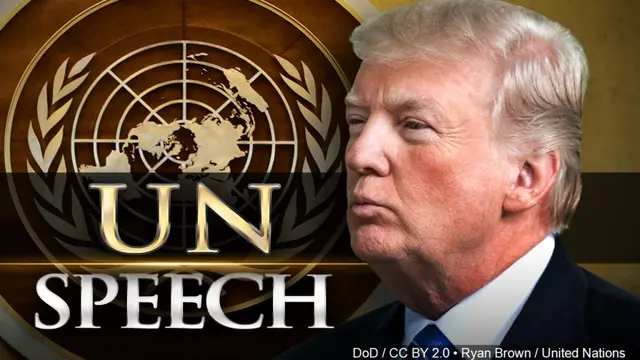As revealed at the United Nations Climate Change Conference in Bonn, Germany, recently, greenhouse gas emissions, a major cause of global warming, are rising after remaining flat for nearly three years. The greatest hope in this depressing situation perhaps lies with China, with its intention to launch a much-awaited carbon trading scheme to cap emissions.
“All preparations for the Chinese carbon market are in place and it has now entered the examination and approval process,” China's special representative for climate change Xie Zhenhua said on the sidelines of the Bonn climate talks.
In the last few years, climate change activists have been pressuring China to reduce emissions. The country is the world’s biggest contributor to the increase in greenhouse gases with a projected growth of 3.5 percent in 2017, according to data from the Global Carbon Project.
China, USA, EU and India are top four emitters of the world.
All eyes are on China to see whether it can roll out a national carbon trading scheme that has been in the works for years. Expectations are high after President Xi Jinping set a target for the scheme to be launched before the end of 2017.
Experts are gathering in Beijing on Wednesday at a meeting of the China Carbon Forum, an independent platform for climate change professionals, to hear about the prospects for hitting that target.
China going beyond carbon pilot project
China has been doing its bit to contain emissions. During the United Nations Copenhagen Climate Summit in 2009, the Chinese government committed to decreasing its carbon intensity by 40–45 percent compared to the 2005 level by 2020.
The country has also been cautiously experimenting with the idea of implementing the carbon trading scheme for the last five years. The National Development and Reform Commission (NDRC) in 2013 launched seven pilot emission trading schemes (ETS) in Beijing, Tianjin, Shanghai, Chongqing, Shenzhen, Guangdong, and Hubei. The pilot ETS covers major polluting sectors including power, cement, steel and petrochemicals in these regions.
For China, expanding the carbon trading scheme is a Herculean task keeping in mind its economic rise and the limited success in implementing these systems in Europe and other countries.
Huw Slater, research manager, China Carbon Forum, told CGTN that the time has arrived for China to put a cost on the emissions. “Once launched on a national scale, it will be the world’s largest carbon trading market that will lead to the use of clean technology and control emissions on a massive scale,” he said.
Implementing the national carbon trading scheme also means bringing in new legislation and an overhaul of emission data.
“One of the biggest challenges for implementation would be formulating new legislation and getting reliable emission data and overcoming shortcomings of carbon trading,” Slater added.
How carbon trading schemes work and why data is important
The idea of carbon trading was conceptualized with the Kyoto Protocol in 1997, promoting cutting emissions by paying for carbon-lowering schemes. The scheme aims at mitigating climate change impact.
It puts a cap on the overall amount of emissions from carbon sources like the power, steel, and cement making industries that guzzle a lot of coal. In order to control the agreed emission limit, the government issues permits that are generally auctioned.
In case a company breaches its carbon emission limit, then it has to buy more permits. If the company emits less than the set limit, then it can sell the excess permits for cash. The scheme is also referred as cap-and-trade.
“Companies have to first declare their emissions and also the amount of emissions controlled. There needs to be a mechanism to crosscheck this data,” Slater said.
At present, the European Union ETS launched in 2005 is the largest carbon trading scheme, followed by the United States Regional Greenhouse Gas Initiative (RGGI).
Carbon trading not a magic panacea
However, carbon trading has not worked efficiently in the EU, and the governments initially tried to promote it by giving permits for free. The distribution of permits nearly free or at a low price to boost the scheme was severely criticized. Experts came down heavily on “grandfathering” the carbon scheme.
Fossil fuel emissions data in 2016
The economic slowdown in 2008 also led to the weakening of the carbon trading scheme. During initial days of trading, the price of carbon emissions climbed to 40 US dollars per ton, but it crashed to a paltry 4 US dollars a ton in 2008.
In 2007, Australia also launched a cap-and-trade system with a plan to link it with the EU. It suffered major delays with the change of the government in Australia.
According to Hannah Ryder, China policy consultant and former British diplomat who was involved in planning the EU ETS in the UK, EU’s first attempt towards implementing ETS was not very successful. "The scheme was not well coordinated enough and didn’t provide enough rules – for example, some countries didn’t set tough caps," she said. The companies found it very easy to meet their targets – even just by installing one small new piece of equipment and the market didn’t work.
“The EU had to improve the scheme in a few years. I hope China will learn from this experience and set enough tough rules.”
A recent study by researchers at Tianjin University claimed that China’s pilot carbon trading schemes are less cohesive than the EU ETS. The researchers said more integration was needed in China between supervision of allowance allocations, allowance formats and trading methods, market risk management, market linkage mechanisms, and legislation security.
(CGTN)
 简体中文
简体中文

